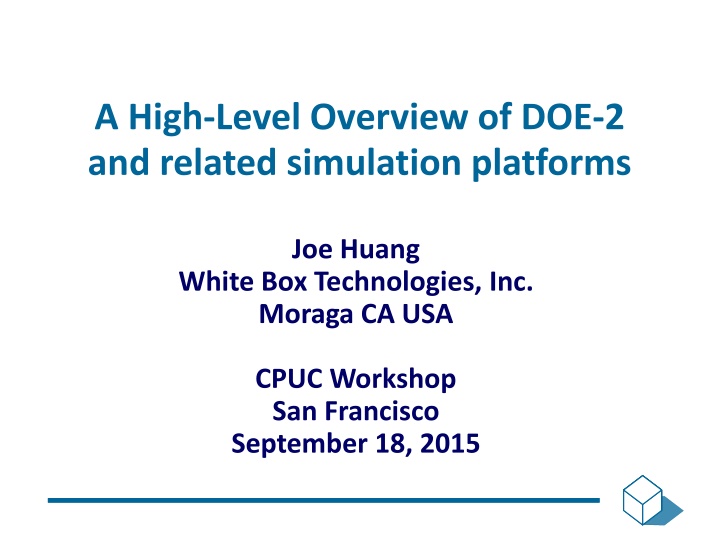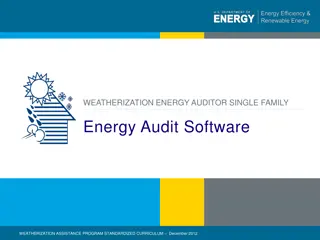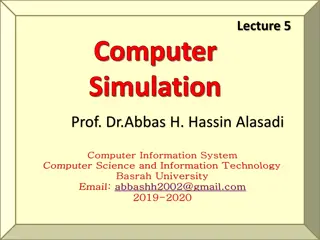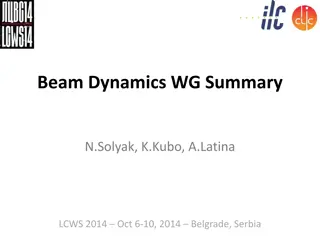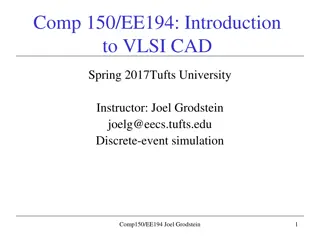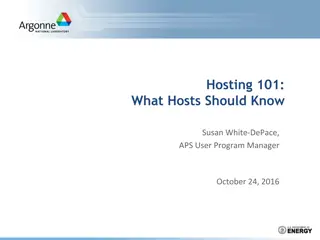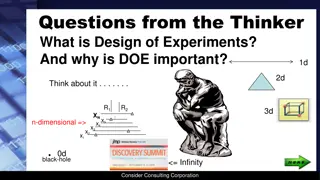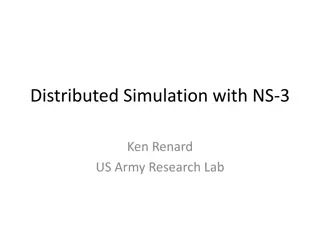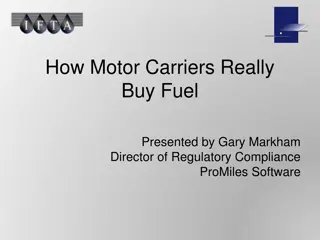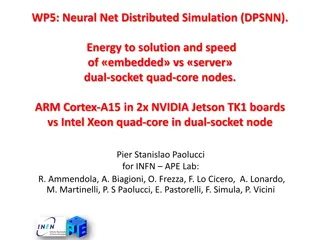Overview of DOE-2 and Energy Simulation Platforms
This content explores the development, updates, and usage of DOE-2 and related energy simulation tools in the US, particularly focusing on tools like eQUEST. It discusses the history, evolution, and key features of these simulation platforms and their impact on building energy analysis.
Download Presentation

Please find below an Image/Link to download the presentation.
The content on the website is provided AS IS for your information and personal use only. It may not be sold, licensed, or shared on other websites without obtaining consent from the author.If you encounter any issues during the download, it is possible that the publisher has removed the file from their server.
You are allowed to download the files provided on this website for personal or commercial use, subject to the condition that they are used lawfully. All files are the property of their respective owners.
The content on the website is provided AS IS for your information and personal use only. It may not be sold, licensed, or shared on other websites without obtaining consent from the author.
E N D
Presentation Transcript
A High-Level Overview of DOE-2 and related simulation platforms Joe Huang White Box Technologies, Inc. Moraga CA USA CPUC Workshop San Francisco September 18, 2015
Contents of talk Personal background How are the tools currently being developed, updated, QC ed, and documented? How do people access the tools and documentation? How do people understand which inputs are locked and which are set by users within the tool interfaces? What do the outputs look like? Is there access to the source code? How is this managed? Is there training available?
Personal background in building energy simulations 1980-1981 studied building energy simulations, primarily with DOE-2, as graduate student at UC Berkeley 1981-2007 worked at LBNL doing building energy analysis mostly with DOE-2, and provided technical support for DOE, state and utility institutions, and international organizations. 1987- now added modules to DOE-2 1997-2005 member of EnergyPlus Development Team 2007- now private consultant as White Box Technologies. ASHRAE TC 4.7 chair 2015-, TC 4.2 chair 2003-5 IBPSA-USA board member 2015-
Timeline of Energy Simulation in the US 1980 (from RMI 2011)
What tools are being used in the US for energy modeling ? From Building Energy Modeling (BEM) Innovation Summit Pre-Read, Rocky Mountain Institute, 2011
Evolution of DOE-2/eQUEST Time DOE-2 versions 1978 DOE-1.0 1980 DOE-2.0 1981 DOE-2.1A . . 1993 DOE-2.1E (last DOE-supported version) 1995 DOE funding stops, further development done by JJHirsch & Assoc. 1996 DOE-2.2 1999 . . 2010 . DOE-2comply 2013 . DOE-2.2R (Refrigeration) 2015 DOE-2.3 Customized versions GUI versions PowerDOE eQUEST 1.0 . . . eQUEST 3.6
How is DOE-2/eQUEST currently being developed, updated, QC ed, and documented ? Core simulation engine (DOE-2) has been under continuous development for 35 years (1980-2015) by the same development team (LBNL + JJHA 1980-1996, JJHA 1996-2015) DOE-2 has been in extensive use for over 30 years, and has proven to be a very robust, stable, and fast simulation engine. The standard eQUEST User Interface has been under development for 19 years that allows users at all skill levels to do building energy analysis quickly and efficiently. Specialized versions of eQUEST have been developed for specific needs of building modelers, e.g., parametric analysis, compliance simulations, graphical output reports, etc.
How is DOE-2/eQUEST currently being developed, updated, QC ed, and documented ? eQUEST has several wizards to help new users or to save time for experienced users. eQUEST also shows 2-D and 3-D displays of the building geometry, imports CAD files for point-and-click drawing, and graphically displays the HVAC equipment. eQUEST contains rule sets and a rules interpreter that automate the modeling procedure for compliance calculations. DOE-2.2 contains many improvements over DOE-2.1E, such as combining SYSTEMS and PLANT into a single HVAC module, the use of loops, and more SYSTEM-TYPES (GSHP, VRF, etc.) DOE-2.2 has dynamic defaults to help users build realistic models and expressions to fine-tune inputs. The underlying DOE-2.2 program can be run independently, giving expert users access to features beyond that in the eQUEST GUI.
How do people access the tools and documentation? When new versions of DOE-2 are released, they are always documented by a technical report describing new features, changes to the input language, and sample input files. In major releases, such as DOE-2.1E, the documentation covers previous minor releases, lists all active keywords, and can be used as standalone documentation to that version. DOE-2.1E source code and executables are still available from the Energy Software and Technology Center (ESTSC), located in ORNL. DOE-2.2 and 2.3 executables are freely available from JJHA (www.doe2.com) as part of the eQUEST package. Compiled source code is available for view; Complete DOE-2 readable source code includesd in every release for review.
How do people access the tools and documentation (user support) ? eQUEST has a large user base on the Equest-users bulletin board to answer questions and help with problems. Subscribe at list.onebuilding.org/listinfo.cgi/equest-users- onebuilding.org. Some questions on eQUEST have also appeared in related bulletin-boards such as BLDG-SIM, and occasionally in Unmet-Hours. Questions are answered by other users, and not by the eQUEST/DOE-2 development team. Questions can range from the very basic cry for help to detailed discussions on how to interpret ASHRAE 90.1 rules for compliance calculations or LEED submittals. General impression is that of a self-sustaining activity.
How do people understand which inputs are locked and which are set by users within the tool interface? The standard version of eQUEST contains numerous default inputs (as does DOE-2), but gives users the flexibility to modify them as they set fit. The compliance version of eQUEST contains Rule Sets and a Rules Interpreter that can automatically create the Reference Building according to standards such as ASHRAE-90.1 or California Title-24, as well as set the internal conditions, thermostat setpoints, etc., in accordance to those standards. Rule Sets have also been developed for Utility Deemed Savings calculations based on the developer s (JJHA) work in building the DEER data base. Users of eQUEST will quickly learn which inputs are fixed and which are allowed for user input, as the inputs are colored coded to differentiate between defaults and user inputs.
What do the outputs look like (1)? DOE-2 outputs a large number of standard reports of the total and peak energy use by end-use, e.g., heating, cooling, & lighting, by month for each zone and the total building. DOE-2 also produces a summary BEPS table giving only the annual totals by end-use. For large parametric studies, the results can be further processed into tables with one row per run with the energies shown in columns.
What do the outputs look like (2)? With eQUEST, these results are displayed graphically as pie or bar charts. Single-Run Report: Annual Electricity Energy End-Uses
What do the outputs look like (3)? With eQUEST, these results can be displayed graphically as pie or bar charts. Single-Run Report: Monthly Electricity Energy End-Uses
Is there access to the source code? How is this managed? DOE-2.1E source code and executables are still available from the Energy Software and Technology Center (ESTSC), located in ORNL. DOE-2.2 and 2.3 executables are freely available from JJHA (www.doe2.com) as part of the eQUEST package. Compiled source code is available for view, but a cross-licensing agreement with JJHA is needed for those wanting to do development work on either DOE-2 or eQUEST. Licensed developers have access to both release and development versions via Web SVN hosting service. DOE-2 requires Intel C/Fortran compilers as well as MS Visual Studio 2010. eQUEST also requires several third party toolkit licenses.
Is there training available? Yes. There are several commercial companies or consultants who periodically hold training classes in various parts of the US.
